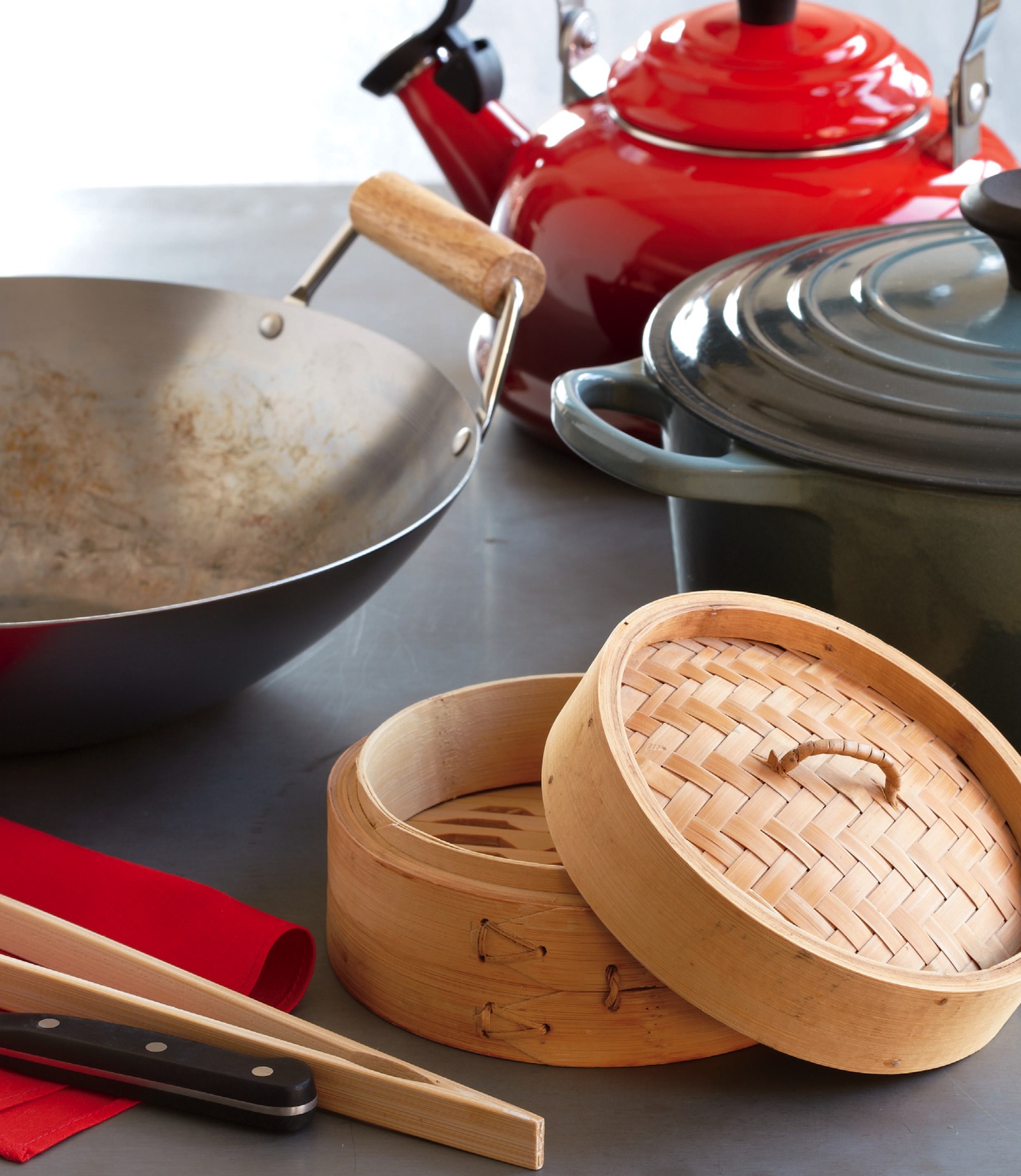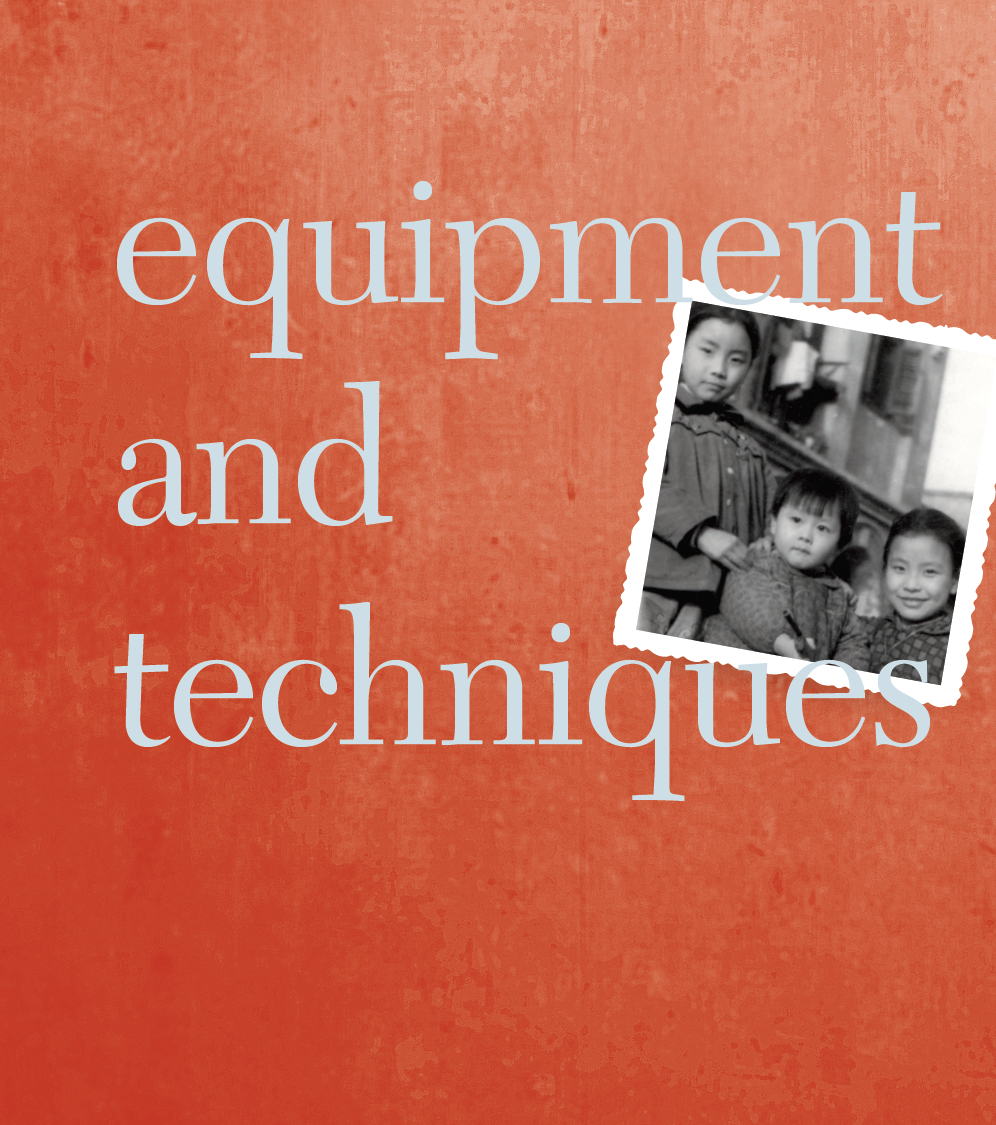


Knives are an essential tool in the kitchen. Low-quality knives dull quickly, and are not only fatiguing to work with but also hazardous. Select knives with comfortable handles that fit your hand. Although I have a fine Chinese cleaver, I prefer my 8-inch chef’s knife that is just the right weight and size for my hands.
A rice cooker can save you a lot of time. It can cook rice and rice porridges to perfection, as well as steam foods without close supervision. There are many varieties of rice cookers on the market. Decide on an appropriate size for your family, and then select the features you would like to have.
A basic rice cooker simply cooks the rice and then shuts off. High-end rice cookers offer many other features, like induction heating for energy efficiency or “neuro-fuzzy logic” to make fine adjustments as the rice cooks to achieve better results, and keep the rice moist and warm for up to 12 hours. I can program my Zojirushi “neuro-fuzzy logic” rice cooker in the morning so it begins to cook rice in time for the evening’s meal. It offers different settings for cooking white or brown rice, or porridges.
A skillet or frying pan has sloping sides. It is ideal for flipping and tossing food, and good for pan-frying and making omelets. You may need to purchase a lid separately. I have a chef’s pan with deep sloping sides, which serves most of my everyday cooking needs.
A sauté pan has higher, vertical sides. It can be used for cooking dishes with lots of liquid.
Skillets and sauté pans range from 7 to 14 inches in diameter. If you want only one, buy a 10- or 12-inch pan, and preferably one with a lid, which is suitable for a family of four.
If you are using nonstick, look for a skillet made without PFCs. These pans are marketed as “green” or “eco-friendly” and have a ceramic-based surface coating that won’t break down when used over high heat.
There are many types of steamers on the market, including steamer inserts for standard cookware, bamboo steamers, and electric countertop steamers.
When steaming food, be sure to lift the lid up and away from you to protect yourself from scalding steam. Check the water level often and add more water as necessary. Be sure the food is placed above the water level to avoid submerging the food.
Even if you don’t own a steamer, you can still use other kitchen equipment to steam food. To use a wok as a steamer, and prevent the steam racks from scratching the bottom of a nonstick wok or pan, set the rack on a heatproof plate. If you don’t have a rack, use a small, heatproof bowl, filled with water, and place the plate of food on top. Fill your wok about one-third full with hot water and bring to a boil. Cover and steam as instructed in the recipe.
A wok is a versatile utensil for stir-frying, steaming (see above), and even cooking soup. In the homes of many families in Asia, the wok is the main cooking utensil. Choose a high-quality, cast-iron or carbon-steel wok. The nonstick coating on inexpensive woks can peel off over time. A good choice for everyday use is either a 12-inch or 14-inch size.
I prefer a flat-bottomed wok to a round-bottomed one because it sits directly on the burner, working effectively on both electric and gas ranges. Purchase a snug-fitting lid if your wok doesn’t have one; it’s handy for steaming and prevents spattering. Wok lids made of aluminum are the lightest and most inexpensive.
If you don’t have a wok, don’t let that stop you. A high, slope-sided skillet or chef’s pan works just as well.
Today, you can buy precut fresh or frozen vegetables or use an electric food processor to do the slicing and chopping for you. However, I still enjoy the traditional method of cutting vegetables with a knife. A good set of knives is imperative. While cutting ingredients can be time-consuming, it can also be relaxing. I enjoy playing classical music while cutting ingredients, making the task a meditative experience.
When cutting ingredients for Asian-style cooking, the goal is to create uniform, bite-size pieces so that all of the ingredients will cook evenly and create an attractive presentation.
Seasonings and garnishes such as fresh herbs should be minced, so their flavors can be easily absorbed into the dish.
Marinating is one of the cornerstones of Asian cuisine. It serves a variety of purposes: tenderizing, sealing in flavors, and moderating strong smell in seafood and meat. Marinating times vary by recipe and cooking methods.
Marinating raw meat, fish, tofu, and vegetables with sauces or dry spices can take anywhere from 15 minutes to overnight. I like to avoid using plastic containers if I’m marinating foods for a long time, as plastic and aluminum can alter the taste. Use nonreactive containers like glass, stainless steel, or ceramic and always refrigerate marinated foods. To use a marinade for raw meat or seafood as a sauce, it must be heated to a full boil in order to be safe to consume. Otherwise, discard it.
Pairing sauces with the right dishes is similar to pairing wine with a meal. Most sauces are versatile and can be used for marinating, dipping, or stir-frying. They liven up dishes and can often serve as a key ingredient. Prepare the sauce before you start cooking to give the flavors time to blend. Make extra so you will have them at hand when needed. Most of the sauces in this book can last up to 5 days in a sealed container in the refrigerator.
A slow cooking process, often used to cook stews, soups, and sauces, simmering allows foods to absorb more flavors. To achieve a simmer, bring the liquid to a full boil, then reduce the heat to just below the boiling point.
In Asia, steaming is second in popularity only to stir-frying as a cooking technique, in part because most kitchens are not equipped with ovens. Seafood, meat, vegetables, custards, filled buns, dumplings, and even desserts are frequently steamed.
Steaming works by suspending food over boiling water. The hot vapors given off from the water surround and cook the food, allowing ingredients to retain their vitamins, minerals, moisture, and flavors. It gives food a clean, delicate taste and is an ideal technique for those who want to enjoy light, healthful meals.
The traditional way to steam is to place food in a stack of bamboo steamers over a wok or large pot with water. A dish with sloping sides will prevent the food from spilling over, and make it easier to remove after the cooking is completed. You can also steam food without the bamboo steamers. See the section on Steamers. Below are a few helpful steps:
Stir-frying is the most common Asian cooking technique. This method begins by heating up oil and stir-frying dry or fresh spices such as ginger, garlic, chiles, green tea, or sesame seeds to flavor the oil. Other ingredients, sauces, and seasonings are then added in their proper order during the cooking. The food is stirred constantly.
Stir-fried dishes take just minutes to prepare. Stir-frying is an ideal cooking method for a busy, modern lifestyle and a perfect way to prepare tasty, healthy meals, because it requires very little oil, the cooking time is short, and the food retains its natural flavors, nutrients, and textures.
Traditional stir-frying requires a lot of chopping, complex seasonings, and a wok. When time is of the essence, use precut vegetables and sliced meats that are readily available in supermarkets, along with store-bought sauces and flavored oils.
Ready: Stir-frying is like getting on a roller coaster—once you start, there’s no stopping. Make sure you have all your ingredients cut, meats marinated, and sauces mixed. Arrange everything near the wok, including the serving plate and garnishes. To ensure even and fast cooking, most of the recipes in this book call for thinly sliced or shredded ingredients. Set the table. That’s right! Stir-fried food tastes its best when it is hot. You don’t want your hot creation getting cold and soggy.
Set: Stir-frying is usually done in batches of ingredients, and the order in which the ingredients are added is important. Aromatic seasonings like green tea, ginger, and garlic usually go in first, followed by meats or seafood, and firm vegetables such as carrots go in before softer ones such as spinach. Add the sauce when the other ingredients are partially cooked.
Go: Preheat the skillet or wok for a minute before adding the oil. Swirl it to coat the surface and heat the oil. If the recipe calls for dry green tea leaves, garlic, ginger, or chile pepper, this is the time to add it. With practice you can judge by the cooking sounds and smells. The purpose here is to flavor the oil and release the fragrance of the seasonings. Quickly add the other ingredients and cover immediately to prevent splattering. Keep the food moving by giving the wok a couple of good shakes. After a few seconds of shaking, and when the moisture from the food has cooked off, you can safely remove the lid and start stir-frying.
Use your spatula to toss the food over the surface of the wok or pan, so that everything cooks evenly. I prefer to use a heat-resistant silicone spatula, which can handle temperatures up to 650°F (345°C).
Don’t forget to taste the dish before you transfer it to the serving plate. Many recipes call for seasoning with salt and pepper to taste. This is the time to taste and adjust the seasoning. If adding sesame oil, put it in at the last minute, since its flavor tends to evaporate when exposed to high heat.